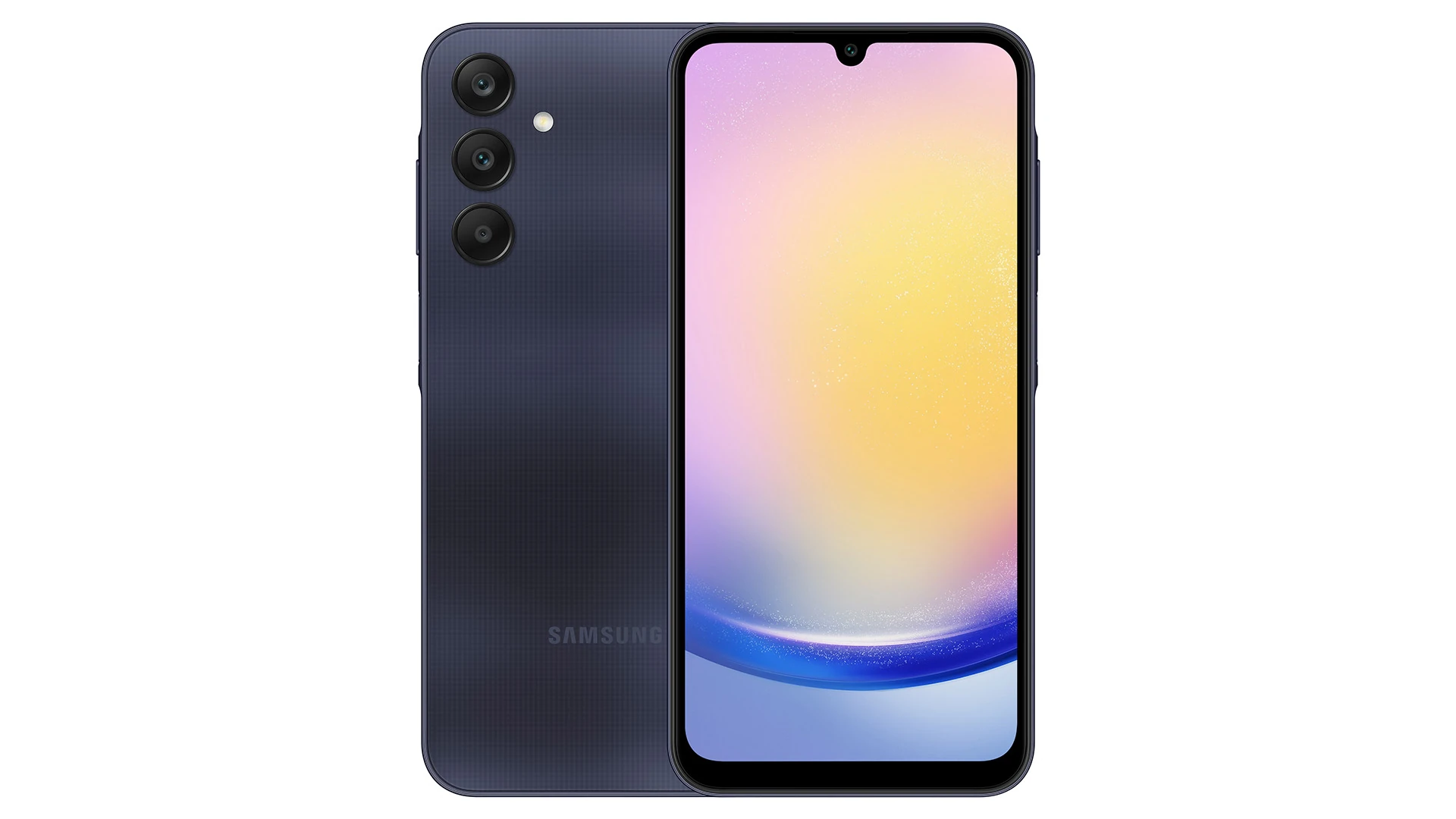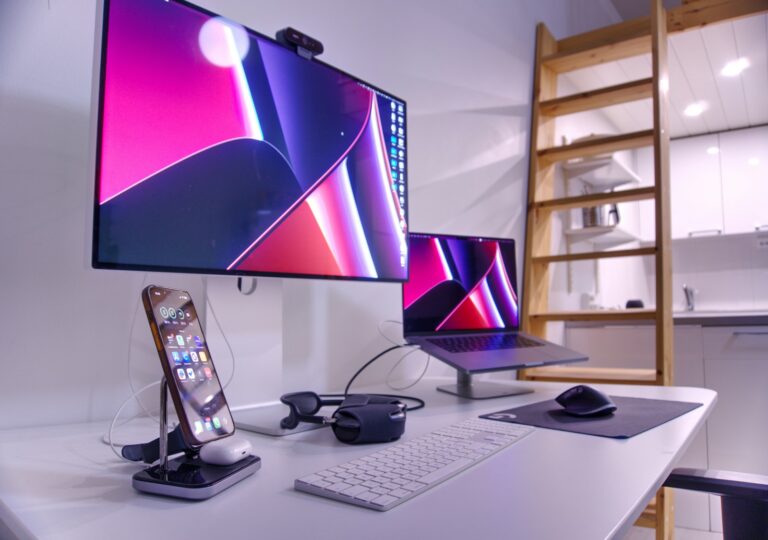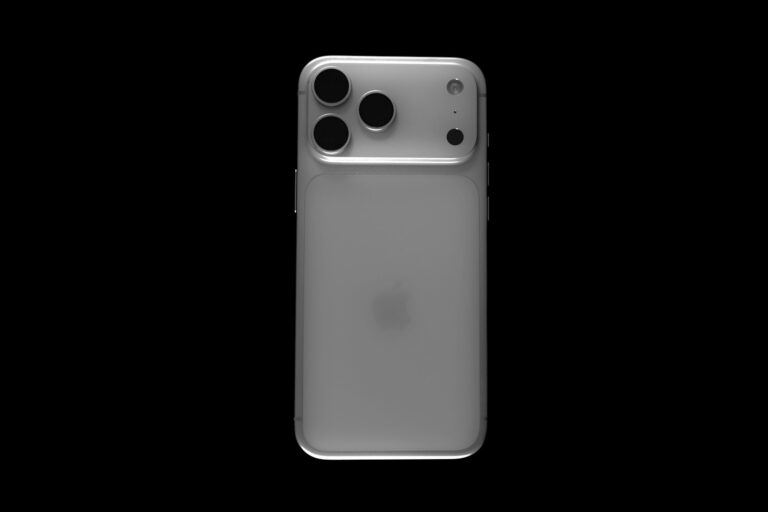
Getting a new Samsung Galaxy phone is exciting, but the default settings don’t always give you the best experience. Many helpful features are turned off when you first unbox your device, while some enabled settings might drain your battery or clutter your experience. Changing a few key Samsung settings can dramatically improve your phone’s performance, privacy, and usability right from the start.
Samsung packs their Galaxy phones with powerful capabilities that aren’t always obvious to new users. From disabling unnecessary animations to activating navigation gestures instead of the traditional button layout, these adjustments can make your daily interactions smoother. Privacy-conscious users will also appreciate knowing which tracking features to disable, while power users might want to enable the full resolution display that comes turned off by default.
Samsung Galaxy Default Settings You Should Change for Optimal Performance
Samsung Galaxy phones come packed with features, but some default settings can affect your device’s speed, battery life, and overall experience. Changing a few key settings can help you get the most out of your phone. Here’s a guide to the essential default settings you should adjust for optimal performance:
1. Change Screen Resolution to Highest Available
- Go to Settings > Display > Screen resolution.
- Set it to the highest resolution (e.g., WQHD+) for sharper visuals.
- Note: Higher resolution uses more battery, so balance quality and battery life as needed.
2. Adjust Refresh Rate
- Navigate to Settings > Display > Motion smoothness.
- Select Adaptive refresh rate (usually up to 120Hz) for smoother scrolling and animations.
- If battery life is a priority, choose Standard (60Hz).
3. Disable or Limit Bixby
- Bixby can launch unintentionally and consume resources.
- Disable Bixby Home by long-pressing the home screen, swiping to Bixby Home panel, and toggling it off.
- Remap or disable the Bixby button if your phone has one via Settings > Advanced features > Bixby key.
4. Turn Off Edge Panels (If Unused)
- Edge Panels can slow down your phone if you don’t use them.
- Disable via Settings > Display > Edge screen > Edge panels.
5. Optimize Battery Settings
- Go to Settings > Battery and device care > Battery.
- Enable Adaptive battery to limit battery use by apps you rarely use.
- Use Power saving mode when you need to extend battery life.
6. Manage Background Apps
- Limit apps running in the background to improve speed.
- Go to Settings > Apps, select apps, and restrict background activity if unnecessary.
7. Disable Animations or Reduce Motion
- For faster navigation, reduce animations.
- Go to Settings > About phone, tap Build number 7 times to enable Developer Options.
- In Developer Options, reduce or turn off Window animation scale, Transition animation scale, and Animator duration scale.
8. Enable Dark Mode
- Dark mode saves battery on AMOLED screens and reduces eye strain.
- Enable via Settings > Display > Dark mode.
9. Use “Color Palette” to Customize System Colors
- Go to Settings > Wallpaper and style > Color Palette.
- Choose a palette that suits your preference and improves visibility.
10. Turn Off Unnecessary Notifications
- Disable notifications from apps you don’t need alerts from.
- Go to Settings > Notifications, customize as needed.
Key Takeaways
- Customizing navigation and display settings improves both performance and battery life on Galaxy devices.
- Enhancing privacy requires disabling several tracking features hidden in multiple settings menus.
- Adjusting notification preferences and app permissions creates a more streamlined and secure user experience.
Getting Started with Your Galaxy S25
The Samsung Galaxy S25 comes with numerous pre-configured settings that might not align with your preferences or usage habits. Understanding and adjusting these defaults can significantly enhance your experience and device performance.
Understanding the Default Settings
The Galaxy S25 ships with Samsung’s One UI interface built on top of Android 12, featuring numerous preset configurations. Some default settings prioritize battery conservation while others focus on visual appeal rather than performance.
The default display resolution is typically set to FHD+ rather than the full QHD+ capability your device supports. This affects visual quality but saves battery power.
Notification settings are pre-configured to show minimal information on the lock screen. Many users prefer to see more details without unlocking their phone.
Samsung’s Device Care feature runs with conservative default settings. Adjusting memory management and battery usage parameters can better align with your usage patterns.
The default app drawer layout may be alphabetical, but can be customized to frequency-based or custom arrangements depending on your preference.
Initial Configuration
When first powering on your Galaxy S25, several key configurations deserve immediate attention. Security settings should be your first priority to protect personal data.
Start by setting up biometric authentication via fingerprint and facial recognition for convenient security. The ultrasonic fingerprint sensor performs better when you register each finger multiple times.
Navigation preferences can be adjusted between gesture controls or traditional button navigation. Many users find gesture controls more intuitive after a brief adjustment period.
Power management options include adaptive battery features that learn your usage patterns. Enable these immediately to improve battery life from day one.
Customize your quick settings panel by rearranging tiles to place your most-used functions at the top. This saves time when accessing frequently used features.
Display settings deserve special attention—adjust brightness, blue light filter, and refresh rate to balance visual quality with battery performance.
Optimizing the Lock Screen
The lock screen on Samsung Galaxy devices offers several customization options that can improve both functionality and security. Smart changes to your lock screen settings can make your phone more useful while keeping your information safe.
Customizing Notifications
Samsung phones allow detailed control over which notifications appear on your lock screen. To manage these settings, go to Settings > Lock screen > Notifications. From here, you can choose to show or hide notification content.
For privacy, you might want to select View style > Icons only to prevent others from reading your messages on the lock screen. This still lets you know when you have notifications without revealing their contents.
You can also disable the Samsung Wallet gesture that sometimes activates by accident. Navigate to the menu tab, tap the gear icon, then go to Quick access > Access locations and default card, and turn off Lock screen access.
For less distraction, consider turning off notification pop-ups for specific apps that aren’t urgent.
Setting Up Always-On Display
The Always-On Display (AOD) feature shows basic information like time, date, and notification icons even when your screen is locked.
By default, Samsung sets this feature to show only briefly when you tap the screen. For greater convenience, you can change it to “Always” display by going to Settings > Lock screen and AOD > Always-on Display. This makes checking the time or notifications possible without waking your phone.
Keep in mind that using AOD constantly will increase battery consumption. As a middle-ground option, you can set it to display on a schedule during your active hours.
You can also customize what appears on the AOD by selecting different clock styles, colors, and whether to show music information.
Enhancing Security
Strong lock screen security is essential for protecting your personal data. Samsung offers multiple security options beyond the basic PIN or pattern.
The most secure option is to use biometric authentication combined with a strong backup method. Go to Settings > Security and privacy > Biometrics to set up fingerprint recognition or facial recognition.
For maximum security, avoid using the swipe option as it provides no actual protection. Instead, use a complex PIN (at least 6 digits) or password.
Enable the “Secure lock settings” option to require your security method immediately when the screen turns off. This prevents the delay that sometimes occurs by default.
Consider turning off Smart Lock features if you’re concerned about security, as these can automatically unlock your phone in certain conditions.
Home Screen and Navigation Customization
Your Samsung Galaxy’s interface is highly customizable, allowing you to tailor the navigation experience and organize content exactly how you want it. Making a few simple changes to these default settings can significantly improve your daily phone experience.
Adjusting Navigation Bar and Swipe Gestures
Samsung phones offer multiple ways to navigate your device. The traditional three-button layout at the bottom of the screen can be customized for button order and layout. Users can swap the positions of the Back and Recent buttons to match their preference.
For a more modern experience, consider switching to gesture navigation. This option removes the buttons completely, giving the screen a cleaner look and more display space. To enable this:
- Go to Settings
- Tap Display
- Select Navigation bar
- Choose “Swipe gestures”
With gestures enabled, users swipe up from the bottom to go home, swipe up and hold for recent apps, and swipe from either edge to go back. These navigation options can be adjusted in the same menu to better suit your usage style.
Organizing Widgets and Apps
The Samsung home screen offers powerful customization features that go beyond what many other Android phones and iPhones provide. Users can adjust the home screen grid to fit more icons by:
- Long-pressing on empty home screen space
- Tapping “Settings”
- Selecting “Home screen grid”
- Choosing a denser layout like 5×6
Widgets deserve special attention on Galaxy devices. Samsung provides many useful widgets that can be added by long-pressing the home screen and tapping “Widgets.” The Smart Suggestions widget is particularly helpful as it recommends apps based on your usage patterns.
For better organization, create folders by dragging one app onto another. You can also customize quick access to frequently used apps by pinning them to the bottom row of the home screen, which remains visible across all home pages.
Display and Sound Settings
Your Samsung Galaxy phone comes with many customizable display and sound options that can improve your daily experience. Tweaking these settings helps with both eye comfort and audio enjoyment.
Selecting the Right Color Profile
Samsung Galaxy devices offer several color profiles that change how your screen displays colors. To access these options, go to Settings > Display > Screen mode. The default “Vivid” setting shows bright, saturated colors, while “Natural” displays more realistic tones.
For night-time users, the “Eye comfort shield” feature reduces blue light that can disturb sleep. This setting can be found in the display settings and scheduled to activate automatically at sunset.
Professional users might prefer the “Advanced settings” option which allows precise color temperature adjustments. Photographers and designers often select color profiles that match their editing requirements for more accurate work.
The device also offers adaptive brightness that adjusts screen brightness based on your environment. This helps reduce eye strain and save battery life.
Adjusting Font Size and Display Scaling
Text that’s too small can strain eyes during extended phone use. Samsung allows users to increase font size through Settings > Display > Font size and style.
Users can select different font styles or download new ones from the Galaxy Store. Bold text option makes everything easier to read without changing the size.
The Screen zoom feature changes the size of all content, not just text. This display setting is particularly helpful for users with vision difficulties.
The “Keep screen on while viewing” option prevents the display from timing out while you’re looking at it. Find this by going to Settings > Advanced features > Motions and gestures. This uses the front camera to detect when you’re looking at the screen.
Touch sensitivity can also be adjusted for those who use screen protectors, ensuring the display remains responsive.
Setting Up Sound Profiles
Samsung Galaxy phones feature Dolby Atmos technology that creates immersive audio. Enable it by going to Settings > Sounds and vibration > Sound quality and effects and toggling on Dolby Atmos.
For gamers, there’s a specific “Dolby Atmos for gaming” setting that enhances directional sound cues. This improves the gaming experience by helping players locate enemies through audio.
Sound customization doesn’t stop there. The Equalizer settings let you adjust bass, treble, and mid-tones to match your preferred audio profile.
The Separate app sound feature is particularly useful. It allows you to play audio from a specific app on a different device while using your phone normally. Perfect for listening to music on speakers while keeping notification sounds on your phone.
Volume key controls can be customized to adjust media volume by default instead of ringtone volume, which most users prefer.
Enhancing Privacy and Security
Modern Samsung Galaxy phones come with powerful privacy tools that need proper configuration. These settings help protect personal data and prevent unwanted tracking while maintaining essential functionality.
Managing Location Services and Permissions
Samsung devices track location for many services, but this can risk privacy. To better control this, go to Settings > Location and toggle off “Improve accuracy” if you don’t need precise positioning. This reduces location data collection when exact positioning isn’t needed.
App permissions need regular review too. Navigate to Settings > Privacy > Permission manager to see which apps access your camera, microphone, and location. Remove unnecessary permissions by tapping each category and reviewing apps.
For sensitive apps, enable “Ask every time” instead of “Allow all the time” for location access. This gives better control over when apps track your movements.
Consider disabling personalized ads by going to Settings > Privacy > Samsung Privacy, then turning off “Customization Service” to reduce targeted advertising.
Securing the Device with Advanced Options
Samsung offers robust security features beyond basic screen locks. Enable Biometric Protection by going to Settings > Biometrics and security. Configure fingerprints or facial recognition for quicker access while maintaining strong security.
Auto Factory Reset is an important setting to enable:
- Go to Settings > Biometrics and security
- Tap “Secure lock settings”
- Toggle on “Auto factory reset”
This will automatically erase your phone after 15 failed unlock attempts, protecting your data if stolen.
Samsung’s Secure Folder creates an encrypted space for sensitive files and apps. Access it through Settings > Biometrics and security > Secure Folder, then follow setup instructions.
Replace Samsung’s password manager with Google Password Manager for better cross-device compatibility. Go to Settings > General Management > Passwords and autofill > Autofill service and select Google.
General Management and Accessibility
The General Management section of Samsung Galaxy phones contains crucial settings that affect daily usage. These settings include language preferences, keyboard options, and accessibility features that make the device more user-friendly for everyone.
Configuring Language and Input
Samsung Galaxy phones offer extensive customization for language and keyboard settings. Users can adjust these options by navigating to Settings > General Management > Keyboard list and default. From this menu, it’s possible to change the default keyboard to a preferred option.
For multilingual users, adding multiple languages allows for seamless switching between keyboards. This feature is particularly useful when communicating in different languages throughout the day.
Font size and style are also customizable, making text easier to read. Many users find that adjusting the default font size improves readability without straining their eyes. Samsung provides several preloaded fonts, with options to download additional styles.
The keyboard settings also include options for autocorrect, predictive text, and keyboard themes. Turning off unwanted features can improve typing accuracy and speed.
Utilizing Accessibility Features
Samsung’s accessibility settings help make devices usable for people with various needs. To adjust these features, users can navigate to Settings > General Management > Reset and find options for resetting accessibility settings if needed.
Key accessibility features include:
- Voice Assistant: Reads on-screen elements aloud
- Visibility enhancements: High contrast themes, color adjustments
- Hearing enhancements: Sound detectors, hearing aid support
- Interaction controls: Touch sensitivity adjustments, interaction timing
The Accessibility menu also offers helpful shortcuts. Users can enable the Accessibility button for quick access to frequently used features. This floating button stays on screen and can be positioned anywhere convenient.
Samsung continually improves these features with each Android update, making their devices increasingly accessible to all users regardless of ability.
Connection Preferences and Accounts
Your Samsung Galaxy offers powerful connection options and account management features that can be customized for better privacy and convenience. Changing these settings can improve your device’s performance and security.
Setting Up Wi-Fi, Bluetooth, and Data Usage
Samsung Galaxy phones have several different connection options that you should configure properly. To manage Wi-Fi settings, go to Settings > Connections > Wi-Fi and toggle it on. You can select “Advanced” to set automatic connection preferences and disable network notifications if they become annoying.
For Bluetooth management, navigate to Settings > Connections > Bluetooth. Consider renaming your device to something recognizable but not personally identifying. Turn off Bluetooth when not in use to save battery and enhance security.
Data usage settings are important for avoiding overage charges. Go to Settings > Connections > Data usage to set limits and warnings. You can also restrict background data for specific apps that consume too much.
Samsung’s Link to Windows feature is worth configuring if you use a PC. Find it under Settings > Connected devices > Link to Windows and follow the setup prompts.
Adding and Managing Accounts
Your Samsung device supports multiple account types including Google, Samsung, and social media accounts. For Google accounts, go to Settings > Accounts > Add account > Google to access Gmail, Play Store, and other Google products.
It’s important to review Samsung account privacy settings. Many users don’t realize they should disable Samsung’s Customization Service which tracks usage patterns. Navigate to Settings > Accounts > Samsung Account and find the option to disable it for better privacy.
For convenience on the lock screen, you can adjust payment methods by going to Settings > Quick access. From there, select Access locations and default card and turn off access from Lock screen, Home screen, and Screen off as needed.
Consider removing unnecessary accounts that you no longer use. This improves security and prevents background syncing that can drain your battery.
Battery and Device Care
Samsung’s Battery and Device Care tools offer powerful ways to extend your phone’s battery life and keep it running smoothly. Making a few simple changes to your Galaxy’s default settings can significantly improve your daily experience.
Monitoring Battery Usage
Your Galaxy phone provides detailed insights into battery consumption. Go to Settings > Battery and device care > Battery to see which apps are using the most power. Look for unusual battery drainers like background apps or services you don’t use regularly.
Samsung offers a helpful feature called Protect battery that limits charging to 85% to extend overall battery lifespan. Enable this by navigating to Settings > Battery and device care > Battery > More battery settings.
Temperature management is also crucial. Samsung recommends keeping your device within 32° – 95°F (0° – 35°C) during use and charging, as extreme temperatures can permanently damage battery capacity.
Maintaining Device Performance
The Device Care menu offers several optimization tools that are disabled by default. Open Settings > Battery and device care and tap “Optimize Now” for a quick performance boost that clears unnecessary cached data.
Memory management settings are worth adjusting for better multitasking. Enable “Auto optimization” to schedule regular system cleanups when you’re not using your phone.
Storage analysis tools help identify large files and unused apps taking up space. The automatic optimization feature can be configured to run during off-hours, keeping your phone running smoothly without manual intervention.
Consider disabling unnecessary animations and reducing screen timeout duration to improve both performance and battery life.
Applications and Software Updates
Samsung Galaxy phones come with several pre-installed apps and regular software updates that can affect your experience. Understanding how to manage these applications and keep your system updated is key to getting the most from your device.
Managing Default Applications
Samsung devices often come with duplicate apps for common functions. For basic tasks, you might have both Samsung and Google versions of the same app. You can change which apps open by default for specific actions.
To set your preferred default apps:
- Go to Settings > Apps > Default apps
- Select categories like Browser, SMS app, or Phone app
- Choose your preferred application for each category
Many users prefer Google’s suite over Samsung’s alternatives. For messaging, Google’s Messages app offers better RCS support than Samsung’s default SMS app.
Bixby can be particularly intrusive on Samsung devices. Users can disable the Bixby button functionality by going to Settings > Advanced features > Side key and changing what happens when you press and hold.
Checking for Software Updates
Samsung regularly releases updates that improve security and add new features to Galaxy devices. Many valuable features remain turned off by default until you enable them after updates.
To check for system updates:
- Open Settings > Software update
- Tap Download and install
- If an update is available, follow the prompts to install it
Setting up automatic updates can ensure your device stays current. Enable this by going to Software update > Auto download over Wi-Fi.
App updates are equally important. Open the Google Play Store, tap your profile picture, select Settings > Network preferences, and enable Auto-update apps to keep all applications current with the latest fixes and improvements.
Frequently Asked Questions
Samsung Galaxy phones come with many default settings that can be adjusted to improve your experience. These key changes can improve battery life, protect your privacy, boost performance, and customize your device to fit your needs.
How can I optimize my Samsung Galaxy phone for better battery life?
Turn on Power Saving Mode by going to Settings > Battery > Power Saving Mode. This reduces battery consumption by limiting background activity.
Adjust your screen brightness or enable Adaptive Brightness in Settings > Display. A dimmer screen uses significantly less power.
Turn off unnecessary features like Always On Display and reduce screen timeout duration to save battery.
Disable background app refresh for apps you don’t need immediate updates from. Go to Settings > Apps > select an app > Battery > Restrict background usage.
What are the privacy settings I should adjust immediately on my new Samsung Galaxy?
Review app permissions by going to Settings > Apps > Permission Manager. Limit location, camera, and microphone access to only essential apps.
Disable personalized ads by going to Settings > Privacy > Ads. Turn on “Opt out of Ads Personalization” to reduce tracking.
Consider turning off “Improve accuracy” in Location settings, which uses Wi-Fi and Bluetooth scanning even when those features are off.
Check Samsung account privacy settings to control what data is shared and stored in the cloud.
Which default Samsung Galaxy settings should be changed to enhance security?
Enable biometric security features like fingerprint or face recognition in Settings > Biometrics and Security to strengthen device protection.
Set up Secure Folder for sensitive apps and data. This creates an encrypted space on your phone separate from regular storage.
Turn on Auto Update in Settings > Software Update to ensure you have the latest security patches.
Customize the lock screen shortcuts to remove quick access to sensitive apps when your phone is locked.
How do I configure my Samsung Galaxy for improved performance?
Clear the cache regularly by going to Settings > Device Care > Storage > Clean Now. This removes temporary files that can slow down your device.
Update apps regularly through the Galaxy Store or Google Play Store to ensure optimal performance.
Adjust animation scales in Developer Options to make your phone feel faster. Go to Settings > About Phone > tap “Build Number” seven times > Developer Options > reduce animation scales to 0.5x.
Disable or uninstall bloatware that comes preinstalled on your device to free up resources.
What settings should I change to customize the user interface on my Samsung Galaxy device?
Change the system color palette in Settings > Wallpaper and Style to match your wallpaper or select custom colors.
Enable Dark Mode in Settings > Display to reduce eye strain and save battery on AMOLED displays.
Switch to gesture navigation instead of the traditional button layout for a more modern experience. Find this in Settings > Display > Navigation Bar.
Customize the Quick Settings panel by swiping down twice from the top of the screen, then tapping the three-dot menu > Button order.
How can I limit mobile data usage on my Samsung Galaxy by adjusting settings?
Enable Data Saver in Settings > Connections > Data Usage > Data Saver. This prevents apps from using data in the background.
Set data usage alerts and limits in Settings > Connections > Data Usage. You can specify warning thresholds and automatic cutoffs.
Use Wi-Fi Download Booster cautiously, as it can consume large amounts of mobile data. Consider disabling it in Settings > Connections > More connection settings.
Configure individual app data permissions in Settings > Apps > select an app > Mobile data. Restrict background data for apps that don’t need constant updates.






